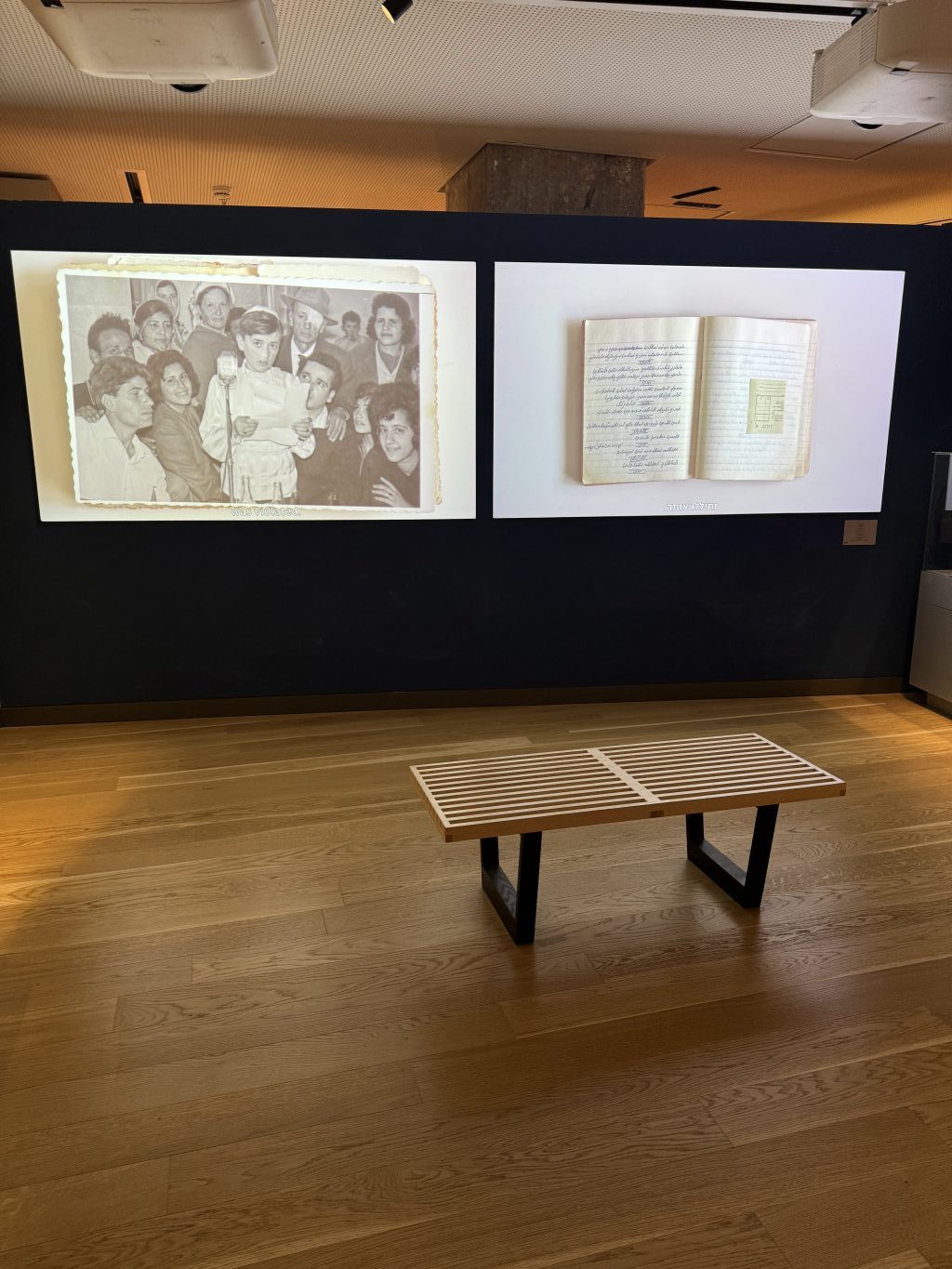Dor Guez (b. 1982)
Pendant Letters, 2014
Two-channel video installation
16.12 min
Courtesy of the Leonid and Tatiana Nevzlin Collection
The work’s title is a literal translation of the Arabic word maalek, which designates the Judeo-Arabic script used among Jews in Arabic speaking countries.
One video features a play from the 1950s written in maalek by the artist’s grandfather Shahadani Guez, an amateur playwright who emigrated from Tunis to Israel in 1951.
The second video presents the story of Shahadani’s wife and the artist’s grandmother, Zina, who was a well-known actress in Tunis’s Jewish theatre in the1930s-40s. In Israel the couple founded a Jewish-Arab theatre troupe for which Shahadani wrote plays in mixed Judeo-Arabic dialect, with plots based on Biblical stories. Their Jewish-Tunisian theatre was active for several years but ran into difficulties and eventually shut down in 1959.
Must Know
Dor Guez (b. Jerusalem) is an artist and archive researcher. His artistic practice revolves around the ways in which contemporary art may assume a role in the writing of historical narrative, a work which he has undertaken in the context of Arab cultures in the Middle East. As in his previous exhibitions, Guez continues to investigate modes of representations and the uses of photographic practice. The exhibition features seven objects, four video works and photographic images produced using a special scanning technique developed by the artist for the Christian Palestinian Archive – a project initiated by the artist which encompasses thousands of images by professional and amateur photographers alike, originating from a worldwide diaspora of Christian-Palestinian communities. Like in the archive project, the assorted items displayed in the exhibition were obtained through private contributions. The title, Pendant Letters, derives from a literal translation of the Arabic maalek, a term designating the Judeo-Arabic script used among Jews in the Arab world. One of the videos on show features the manuscript of a play written in the 1950’s in pendant lettering, by an amateur playwright by the name of Shahadani. Shahadani emigrated from Tunis to Israel in 1951, a time of massive Jewish immigration from North Africa. A parallel video channel presents the story of Shahadani’s wife, Zina, who during the 1930’s and 1940’s was a famous actress in the Jewish theater in Tunis. In Israel the family settled in Lod, in an ‘abandoned’ Arab house rented from the Jewish Agency. It is there that they started a Jewish-Arab theater company of some 30 actors. Shahadani wrote plays in a mixed Judeo-Arabic dialect, with plots based on Biblical stories of Jews in minoritary, compromising circumstances such as Joseph and the Coat of Many Colors or the Book of Esther. he also composed the music and directed the productions, while Zina, now 97, acted as principal actress, sewed costumes and designed stage sets. Their Jewish-Tunisian theater kept going for a number of years, helping them to preserve their Arab heritage. But with no exterior funding it ran into difficulties, and in 1959 had to close down. The videos in the exhibition feature one-shot sequences, each documenting a continuous, repetitive action captured in steady-cam: leafing through a booklet, sorting through photographs, spreading parchment papers on a work board, and changing cassettes in a tape. It also showcases a number of items: a booklet with the handwritten manuscript of Shahadani’s Joseph and the Coat of Many Colors, various theatrical costumes and props designed by Zina, complete with sewing patterns on parchment paper she devised, a photographic documentation of the Queen Esther production, audio cassettes carrying songs in various Arabic dialects, and Zina’s color-coded button collection, amassed throughout her life in Tunisia and Israel. As in his Christian-Palestinian Archive project, neither here does the display conform to established museal and archival ordering systems, but rather to a logic of individual contribution and preferences. Dor Guez has exhibited solo exhibitions in museum and notable exhibition spaces in Israel and worldwide, among them the Petach Tikva Museum of Art, Tel Aviv Museum of Art, Beursschouwburg Center Brussels, KW Institute for Contemporary Art Berlin, the Jewish Museum New York and more

